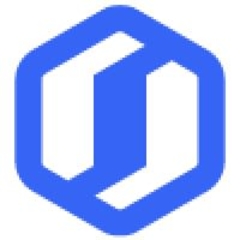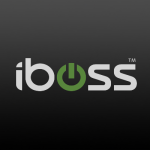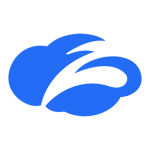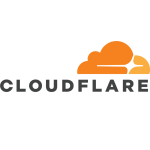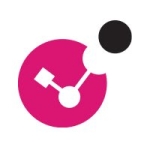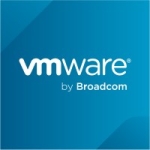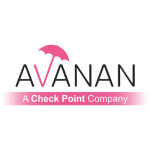What is our primary use case?
The solution is basically it's a cloud access security broker. It's basically the leading cloud access security broker in the market. If you are talking about getting controlling access to AWS, Azure or Google cloud, or most of the major cloud providers, they can integrate that to help protect an organization from data loss, breaches, or from unauthorized access in general.
How has it helped my organization?
I actually had an encounter with a government entity. They had a lot of their staff leaking government data, and they were using a website, a known website called WeTransfer. It's a Chinese website that's used to transfer big files without you needing to create an account. Users in the company were basically, whenever they wanted to transfer files, doing it through this site and unintentionally leaking data.
This week, the POC installed the McAfee web gateway, integrated the MVISION Cloud, and got insights. A lot of their business was done on WhatsApp within their systems. An yet, until this moment, they had no visibility over this. Now they have it. Now they know, and they can initiate changes.
What is most valuable?
What I really like about the product is something called the ability to view the sanctioned IP apps, which is a major challenge for organizations today. There are sanctioned IP apps or unsanctioned IP apps. In an organization, you will find employees that will use services or applications for the business, which are not authorized by the IT department, and the organization fails to have visibility over this.
What McAfee can provide is full details into what your users are doing on the cloud. For example, lots of employees may be using WhatsApp for conducting critical business workflows, and yet their organization is not permitting them to use WhatsApp. Without a solution such as this, the company will never find out if they actually are using WhatsApp and to what rates. With MVISION Cloud and their web gateway, companies basically get visibility and insights into what their users are using on the cloud.
The product has the ability to provide insights and also to advise on misconfigurations on the cloud. For example, I may be a cloud customer and I'm using IS workloads or infrastructure and service workloads on Azure. I may have object storage configured on Azure, however, this object storage didn't get secured properly. It was publicly open. The system can suggest changes to alert you to this item and advise on how to fix the issue.
With MVISION Cloud, you can actually get detection notices. It will notify you, tell you, hey, be careful. You have object storage that is open to the public. You should lock it down, should have restricted access. You should have some credentials here or there. It will basically act like an advisor for your cloud configuration as well. This is what I really like about it, to be honest. It can tell you if something can go wrong before it happens. It allows you to fix things before situations can get out of hand.
In terms of their compatibility with major cloud providers, in terms of their abilities, capabilities, and features, they exceed everyone's capabilities in the CASB market.
Their integration capabilities are vast. They seem to be able to integrate all major clouds.
The solution is very stable.
The solution can scale.
Technical support has been very helpful.
What needs improvement?
The solution is the leader in the market right now. It's hard to consider where it falls short, as it is so far ahead of everything else.
One thing that can be improved is their ability to integrate with other web proxies to discover unsanctioned IP apps. That can be room for improvement.
I'd love to see an on-prem version of the product. Instead of McAfee providing the service, it should be also software available for customers in the market to install on their data centers.
Buyer's Guide
Skyhigh Security
December 2025
Learn what your peers think about Skyhigh Security. Get advice and tips from experienced pros sharing their opinions. Updated: December 2025.
879,711 professionals have used our research since 2012.
What do I think about the stability of the solution?
The solution has been very stable. We haven't had issues with it. It doesn't crash or freeze. It's reliable.
What do I think about the scalability of the solution?
It's not software that you can install. Scalability is on McAfee's end. It's not on the end-user or the partner or any of them, as it's a cloud service basically. However, it scales to meet your company's needs.
We have about ten customers currently using the solution.
How are customer service and support?
Technical support has been very good. It's amazing, especially for the MVISION Cloud portfolio as it's a different team. In general, it's good. We are quite satisfied with their level of support.
How was the initial setup?
You don't install the solution. The dashboard comes from McAfee Cloud. You just integrate it with your cloud, and you enter your credentials to your cloud providers. If you want, you can integrate it with an on-premise McAfee web gateway to get insights, shadow IP, sanction IT apps, look for unsanctioned apps, and whatnot. However, it's not software that you can take and install wherever you like. It's a service, basically.
Which other solutions did I evaluate?
Honestly speaking, there is no competitor for MVISION Cloud. There are competitors in the market, of course, in the CASB market, lots of them. However, there's no one that's reached the level of MVISION Cloud just yet.
What other advice do I have?
I don't have much experience with McAfee MVISION Cloud, however, I do have a good understanding of it. I also managed to pitch it and demo it to one customer and sold it a couple of times.
It's originally not a McAfee product. It belonged to a company called Skyhigh before, which was acquired by McAfee.
I'd rate the solution at a nine out of ten. I don't believe in perfect solutions, however, this is quite good. I haven't ever seen anything quite like it.
I'd recommend it to other users. If a company is having workloads on the cloud, whether it be on Office 365 or AWS or Azure or Google cloud or IBM cloud, whatever cloud, it's highly recommended for them to at least consider MVISION Cloud as it can really help them secure their access to their cloud workloads. Especially those customers who have a hybrid cloud. They will most likely want a CASB that will be able to manage both clouds from the same dashboard.
Which deployment model are you using for this solution?
Public Cloud
Disclosure: My company has a business relationship with this vendor other than being a customer. Distributor

